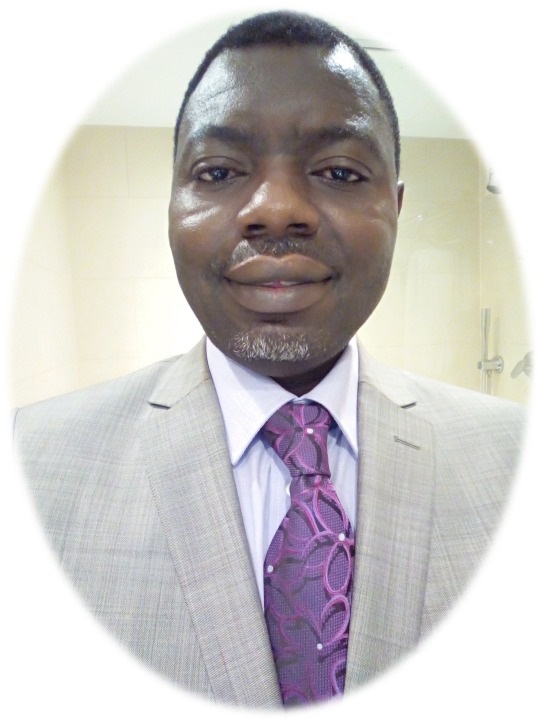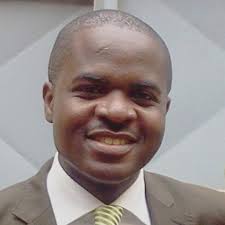Os odontoïdeum, cause rare de compression médullaire : à propos d’un cas
DOI:
https://doi.org/10.55715/jaim.v14i1.340Keywords:
os odontoideum, spinal cord compression, cervical spineAbstract
Os odontoideum is an anomaly of the second cervical vertebra (axis). This has as a correlate the spinal cord compression into the occipito-cervical spinal canal. It is a rare condition with an unknown exact prevalence. We reported the case of an 8-year-old patient presenting with quadriparesis for 9 months evolution. The diagnosis was made on a head CT scan and a MRI of the cervical spine.
RESUME
Os odontoïdeum (OO) est une anomalie de la deuxième vertèbre cervicale ou axis. Il a pour corollaire la compression médullaire dans le canal rachidien cervico occipital. C’est une affection rare, sa fréquence exacte est inconnue. Nous vous rapportons le cas d’une patiente de 8 ans avec une tétraparésie évoluant depuis 9 mois. Le diagnostic a été révélé lors de la réalisation d’un scanner cérébral compléter par une IRM du rachis cervical.
Downloads
References
2. Dai L, Yuan W, Ni B, Jia L. Os odontoideum: etiology, diagnosis, and management. Surg Neurol. févr 2000;53(2):106‑8; discussion 108-109.
3. Fielding JW, Hensinger RN, Hawkins RJ. Os Odontoideum. J Bone Joint Surg Am. avr 1980;62(3):376‑83.
4. Sankar WN, Wills BPD, Dormans JP, Drummond DS. Os odontoideum revisited: the case for a multifactorial etiology. Spine (Phila Pa 1976). 20 avr 2006;31(9):979‑84.
5. Arvin B, Fournier-Gosselin M-P, Fehlings MG. Os odontoideum: etiology and surgical management. Neurosurgery. Oxford University Press; 2010;66 (suppl_3): A22‑31.
6. Perdikakis E, Skoulikaris N. The odontoid process: various configuration types in MR examinations. Eur Spine J. mai 2014;23(5):1077‑83.
7. Öğüt E, Şekerci R, Şen H, Çakın H, Gediz T, Keles-Celik N. Anatomo-radiological importance and the incidence of os odontoideum in Turkish subjects: a retrospective study. Surgical and Radiologic Anatomy [Internet]. 24 avr 2020 [cité 22 sept 2021]; Disponible sur: https://researcher-app.com/paper/4865591
8. Viswanathan A, Whitehead WE, Luerssen TG, Illner A, Jea A. « Orthotopic » ossiculum terminale persistens and atlantoaxial instability in a child less than 12 years of age: a case report and review of the literature. Cases J. 1 août 2009; 2:8530.
9. Menezes AH: Craniocervical developmental anatomy and its implications . ChNS. 2008, 24:1109onship to the congenital type of os odontoideum. Pediatr Radiol - Recherche Google [Internet]. [cité 23 sept 2021]. Disponible sur: https://www.google.com/search
10. Currarino G: Segmentation defect in the midodontoid process and its possible relationship to the congenital type of os odontoideum. Pediatr Radiol - Recherche Google [Internet]. [cité 23 sept 2021]. Disponible sur: https://www.google.com/search?
11. Schuler TC, Kurz L, Thompson DE, Zemenick G, Hensinger RN, Herkowitz HN. Natural history of os odontoideum. J Pediatr Orthop. avr 1991;11(2):222‑5.
12. Garg A, Gaikwad SB, Gupta V, Mishra NK, Kale SS, Singh J. Bipartite Atlas With Os Odontoideum: Case Report. Spine. janv 2004;29(2):E35‑8.
13. Stevens JM, Chong WK, Barber C, et al.: A new appraisal of abnormalities of the odontoid process associated with atlanto-axial subluxation and neurological disability. Brain. 1994 - Recherche Google [Internet]. [cité 23 sept 2021]. Disponible sur: https://www.google.com/
14. Wang S, Wang C: Acquired os odontoideum: a case report and literature review . ChNS. 2012, 28:315–319. 10.1007/s00381-011-1642-3 - Recherche Google [Internet]. [cité 23 sept 2021]. Disponible sur: https://www.google.com/
15. Klimo P, Kan P, Rao G, Apfelbaum R, Brockmeyer D. Os odontoideum: presentation, diagnosis, and treatment in a series of 78 patients. Journal of Neurosurgery: Spine. American Association of Neurological Surgeons; 2008;9 (4): 332‑42.
16. Spierings EL, Braakman R. The management of os odontoideum. Analysis of 37 cases. J Bone Joint Surg Br. 1982;64(4):422‑8.
17. Campbell E, Brown J. Case report of os odontoideum causing Ondine’s curse. British journal of neurosurgery. Taylor & Francis; 2013;27(6):836‑7.
18. Matsui H, Imada K, Tsuji H. Radiographic classification of os odontoideum and its clinical significance. Spine. LWW; 1997;22(15):1706‑9.
19. Gigante PR, Feldstein NA, Anderson RC. C1–2 instability from os odontoideum mimicking intramedullary spinal cord tumor: Report of 2 cases. Journal of Neurosurgery: Pediatrics. American Association of Neurological Surgeons; 2011;8(4):363‑6.
20. Watanabe M, Toyama Y, Fujimura Y. Atlantoaxial instability in os odontoideum with myelopathy. Spine. LWW; 1996;21(12):1435‑9.
21. Abe H, Tsuru M, Mitsumori K. Atlanto-axial dislocation–instability index and indications for surgery (author’s transl). No shinkei geka Neurological surgery. 1976;4(1):57‑72.
22. Chang H, Park JB, Kim KW, et al.: Retro-dental reactive lesions related to development of myelopathy in patients with atlantoaxial instability secondary to Os odontoideum. Spine. 2000, 25:2777–2783. - Google Search [Internet]. [cité 26 sept 2021]. Disponible sur: https://www.google.com/
23. Hughes TBJ, Richman JD, Rothfus WE. Diagnosis of Os Odontoideum Using Kinematic Magnetic Resonance Imaging: A Case Report. Spine. 1 avr 1999;24(7):715‑8.
Downloads
Published
How to Cite
Issue
Section
License

This work is licensed under a Creative Commons Attribution-NonCommercial-ShareAlike 4.0 International License. Copyright @2017. This is an open-access article distributed under the terms of the Creative Commons Attribution-NonCommercial-ShareAlike 4.0 International License (http://creativecommons.org/licenses/by-nc-sa/4.0/) which permits unrestricted non-commercial used, distribution and reproduction in any medium






